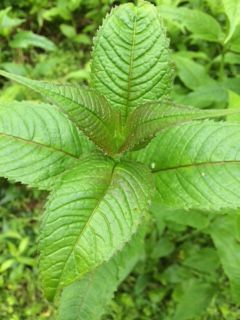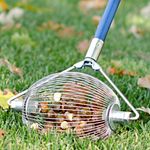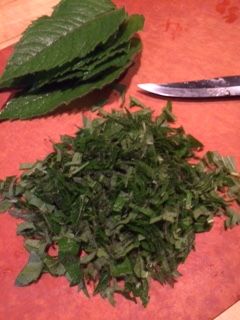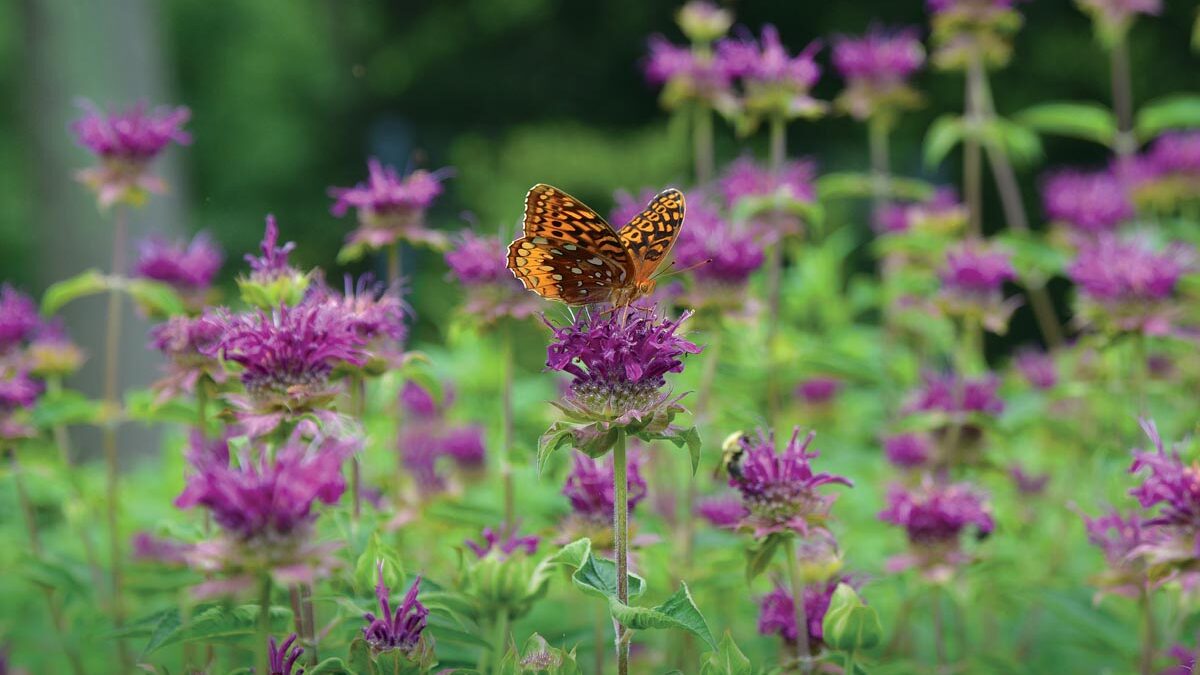
I’ve written about Monarda spp. (commonly referred to as bee balm and/or bergamot) in past posts, when it was in bloom in my garden. However, you needn’t wait until it is in bloom—right now it is about two feet tall and the leaves are not only gorgeous—they are delicious! Read on to see how to use bee balm for both food and drink.
Learn more: 6 Native Bee Balms to Grow for Gorgeous Color in the Garden
The red-flowered bee balm, Monarda didyma, has a tea-like aroma and flavor with a hint of citrus, which is delightful in beverages, with fruits, and in desserts from cakes to custards and ice cream. With the exception of Monarda citriodora (lemon monarda), all of the other monardas with blooms in lavender, white, pink, purple, and fuschia contain carvacrol, which gives them a flavor similar to a spicy oregano—generally these should not be used in recipes for beverages and desserts. If you are not certain, smell and taste your monarda and you will know.
All of the monardas make handsome garden specimens. These perennials return with gusto; in fact, they will take over if allowed. Members of the mint family, they are sturdy and robust, sending runners underground, and they can be invasive. I put in three plants many years ago and have a bed about 15 feet by 6 or 8 feet, still going strong. I did put it in a spot where I knew it could roam. The pollinators, bees, and wasps of all kinds, and butterflies and moths, though especially the hummingbirds, spend a lot of time there.
Besides admiring the foliage, I harvest Monarda didyma leaves to make both hot and iced tea, and dry them to have for future infusions. It is a simple brew, mildly fruity, that is relaxing and enjoyable. I also macerate the leaves with strawberries for shortcake, as well as use them to flavor rhubarb and strawberry compotes, cobblers, and crumbles. The leaves make a delightful syrup, which can be made with sugar, although I like it with maple syrup or organic coconut sugar. This can be used with sparkling water for a refreshing beverage or added to a libation, or used over fruit.
As mentioned above, the red-flowered bee balm is the one to use in teas, beverages, and desserts. All of the other monardas contain the chemical constituent carvacrol, which tastes like oregano and should be used in savory dishes. All of the cultivars and even the species (like M. fistulosa) have very similar leaves, so be sure to smell and taste them before using them in a recipe. I will be writing my next blog about some seasonal savory herbs, and M. fistulosa (wild bergamot or bee balm) will be included.
Meanwhile, here is the link to an article on monarda that I wrote during the peak of bloom. Check it out, and you will see what to expect of this wonderful edible flower. The recipe for Blondies with Monarda and Apricots is included in this post. /item/61607/monarda-in-the-kitchen
I recently made them and increased the herb to about ¼ cup, packed, shredded leaves; they are actually a bit more cakelike than blondie (pleasant with a cup of tea or coffee), or one can go all out and serve them with ice cream or fresh whipped cream and some organic berries.
Fine Gardening Recommended Products

Medium Nut Wizard 14" for English Walnuts, Chestnuts, Golf Balls
Fine Gardening receives a commission for items purchased through links on this site, including Amazon Associates and other affiliate advertising programs.

Gardena 3103 Combisystem 12-Inch To 20-Inch Adjustable Metal Fan Rake Head
Fine Gardening receives a commission for items purchased through links on this site, including Amazon Associates and other affiliate advertising programs.

SHOWA Atlas 370B Nitrile Palm Coating Gloves, Black, Medium (Pack of 12 Pairs)
Fine Gardening receives a commission for items purchased through links on this site, including Amazon Associates and other affiliate advertising programs.





















Comments
Log in or create an account to post a comment.
Sign up Log in